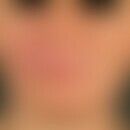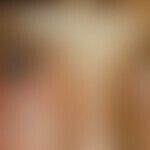Synonym(s)
HistoryThis section has been translated automatically.
Marcello Donati 1586; Milton 1876; Heinrich Irenaeus Quincke 1882; Dinkelacker 1882; William Osler 1888. Heinrich Irenaeus Quincke was certainly not the real first to describe angioedema in 1882. This honor belongs to the great Italian physician Marcello Donati (not to be confused with Mario Donati, the great Italian surgeon, also born in Mantua, who taught us the well-known back-stitch suture), who described angioedema exactly 466 years ago in "De medica historia mirabili", a comprehensive collection of clinical cases and personal anatomical observations, a kind of compilation of extensive clinical case histories.
Marcello Donati began his medical studies in Mantua under Francesco Facini, the physician to Duke Guglielmo Gonzaga. He later continued his studies in Padua, where he graduated on July 17, 1560. Within a few years, from 1543 to 1546, the demonstration method in anatomy, botany and clinic was introduced at the University of Padua. The foundations of modern epidemiology and pathology were also laid there. Among other things, Donati was the first to describe the ulcus ventriculi in a corpse and angioedema. We do not know whether Heinrich Irenäus Quincke was aware of these connections.
H.I. Quincke was born into a medical family in Frankfurt/Oder in 1842. He began studying medicine at the age of 16, first in Berlin and later in Würzburg and Heidelberg. He obtained his doctorate in Berlin in 1863 and passed the state medical examination there in 1864. After an extensive educational trip, which took him to Vienna, Paris and London, and a short period of surgical work, he began his training in internal medicine at the Charité in Berlin at the age of 26 under Friedrich Theodor von Frerichs, with whom he also qualified as a professor in 1870.
DefinitionThis section has been translated automatically.
Polyetiologic, acute (within minutes or a few hours), single or recurrent at irregular intervals, persistent for 1-7 days, hereditary or acquired, non-itching, sometimes painful or "oppressive" swelling of the deep dermis, subcutis and/or mucosa/submucosa. The cause is mediator-mediated (histamine/bradykinin) vascular leakage. Swelling of the pharynx and/or larynx can be life-threatening. Facial swelling is particularly noticeable and frequent, as it leads to considerable disfigurement (see also angioedema of the head and neck region). More rarely, angioedema affects the limbs, the genital area or the gastrointestinal tract.
You might also be interested in
ClassificationThis section has been translated automatically.
Due to different pathomechanisms, angioedema is basically divided into:
Histamine-mediated angioedema without C1-INH deficiency (T78.3):
- Partial picture or equivalent of urticaria.
Hereditary angioedema(C1-INH-HAE/kinin-mediated angioedema/mutations in SERPING1 gene)
- HAE type I: Angioedema hereditary mutation in SERPING1/ most common form (85% of cases). One normal and one null allele of the structural gene are present. Autosomal dominant inheritance. The synthesis of the C1 esterase inhibitor is reduced, its turnover is increased.
- HAE type II: angioedema hereditary mutation in Serping1/ Occurs in approx. 15% of cases. Functionally inactive C1-INH in normal concentration in plasma; functionally active C1-INH in reduced concentration.
Hereditary angioedema(nC1-INH-HAE/nodetectable mutation in the SERPING1 gene. HAEs with normal C1-INH. Normal C1-INH concentration and function)
- HAE typeIII: Angioedema hereditary mutation in F12/F12-HAE/defect in factor XII gene
- HAE TypeIV: Angioedema hereditary mutation in PLG/PLG-HAE/defect in the plasminogen gene)
- HAE type V: Angioedema hereditary mutation inANGPT1/ANGPT1-HAE/defect in the angiopoietin-1 gene
- HAE type VI: Angioedema hereditary mutation in KNG1/KNG1-HAE/defectin the kininogen-1 gene
- HAE type VII: Angioedema hereditary mutation in MYOF/MYOF-HAE/defectin the myoferlin gene
- HAE type VIII: Angioedema hereditary mutation in HS3ST6 /HS3ST6-HAE/defect in the glucosamine 3-O-sulfotransferase 6 gene
- HAE type U: Angioedema hereditary with still unknown mutation /U-HAE
Acquired bradykinin-mediated angioedema with C1-INH deficiency (AAE):
- Type 1 (acquired angioedema, AAE I/increased catabolism of C1-INH)) Partly associated with lymphoproliferative malignant diseases, e.g. malignant lymphomas.
- Type 2 (AAE II/autoimmune type)) as AAE I; detectable antibodies against C1-INH.
Acquired bradykinin-mediated angioedema without C1-INH deficiency (AAE):
- Pharmacologically induced (drug-induced inhibition of the renin-angiotensin system/ACE inhibitors/angiotensin II receptor blockers)
Other (acquired) angioedema:
- Pseudoallergic angioedema (PAE) e.g. due to aspirin
- Idiopathic ang ioedema (IAE) (diagnosis of exclusion)
- Traumatic angioedema (see below angioedema, vibratory)
- Angioedema, episodic with eosinophilia (Gleich syndrome)
- Hypocomplementemic urticarial vasculitis syndrome (see below urticarial vasculitis)
Occurrence/EpidemiologyThis section has been translated automatically.
Acquired histamine-mediated angioedema (urticaria-associated angioedema): Prevalence of chronic recurrent urticaria: 1-5% , of which >50% with angioedema.
Idiopathic angioedema: No exact numbers known.
ACE inhibitor-induced angioedema: prevalence: 0.2-0.7% of treated patients. People with darker skin color have a 3-fold increased risk.Age of manifestation: I.d.R. after 50 years of age.
Hereditary angioedema with C1-INH deficiency: Incidence: Approximately 1.5:100,000 population per year, Prevalence: 1:50,000 population.
Hereditary angioedema without C1-INH deficiency: Very rare.
EtiopathogenesisThis section has been translated automatically.
In acquired mast cell mediator (histamine-) mediated angioedema (without C1-INH deficiency), type I reactions or intolerance reactions to food, food additives, various medications (especially anti-inflammatory drugs, non-steroidal) and physical stimuli with an additive effect are often identified as triggering factors. However, the etiology often remains unclear. Focal events and psychovegetative disorders are also under discussion.
Basically, the following pathogenetic mechanisms lead to the clinical picture of angioedema:
- (frequent) Allergies: As with urticaria, all antigens that can cause a type I or type III immune reaction with mast cell degranulation are possible causes. Clinically, further anaphylactic symptoms may occur, ranging from urticaria to shock.
- (rare) Hereditary or acquired defect of theC1 esterase inhibitor(see below angioedema, acquired/C 1 -esterase inhibitor deficiency and angioedema, hereditary: In hereditary angioedema, the involvement of other genes in addition to the Serping1 gene was only discovered in 2006 with the description of mutations in the F12 gene in patients with HAE and normal C1-INH. In the last three years, advanced next-generation sequencing techniques have enabled the identification of mutations in five new genes associated with HAE and normal C1-INH: ANGPT1 (angiopoietin-1), PLG (plasminogen), KNG1 (kininogen), MYOF (myoferlin) and HS3ST6 (heparan sulfate glucosamine 3-O-sulfotransferase 6).
- (frequent) ACE inhibitors: Another possibility leading to the occurrence of angioedema is the use of ACE inhibitors (e.g. captopril). The inhibition of bradykinin degradation under ACE blockade is presumably responsible for this, see Angioedema, acquired, ACE inhibitor-induced.
ManifestationThis section has been translated automatically.
Allergic angioedema: Incidence of severe anaphylaxis: 1-3:10,000 inhabitants per year, of which almost 50% with angioedema
Visceral ang ioedema: Visceral angioedema can occur with or without involvement of the skin and upper respiratory tract. The disease is bradykinin-mediated. Anaphylactic therapy is therefore not indicated.
Angioedema of the head and neck region:
Urticaria-associated angioedema: Prevalence of chronic recurrent urticaria: 1-5%, of which >50% with angioedema
Idiopathic angioedema: No exact figures
ACE inhibitor-induced angioedema: Prevalence: 0.2-0.7% of treated patients. People with a darker skin color have a 3-fold increased risk; age of manifestation: usually from the age of 50.
Hereditary angioedema with C1-INH deficiency:
- Incidence: Approx. 1.5:100,000 inhabitants per year
- Prevalence: 1:50,000 inhabitants
- Age at first manifestation often ≤10 years
- Gender: ♂ = ♀
Hereditary angioedema without C1-INH deficiency: Very rare. The female sex is almost always affected.
LocalizationThis section has been translated automatically.
ClinicThis section has been translated automatically.
Diffuse, pale, rather burning or painful (usually not itchy), doughy, edematous swelling of the skin and mucous membrane, trunk-shaped bulging lips, swollen eyes, possibly sudden glottis edema.
HistologyThis section has been translated automatically.
Differential diagnosisThis section has been translated automatically.
Allergic contact dermatitis: epidermal component with scaling, possibly oozing
Ascher syndrome (rare): After the age of 5, repeated occurrence of painless swelling of the upper eyelid and upper lip, blepharochalasis due to prolapsed orbital fat and lacrimal gland tissue. Double lip; usually the upper lip is affected, rarely the lower lip. The combination of symptoms confirms the diagnosis.
Dermatomyositis (rare): Instead of red heliotropic swelling, muscle weakness, feeling of illness, tumor history
Systemic lupus erythematosus (rare): Instead of red heliotropic swelling, feeling of illness, hsitology and immunohistology, ANA positive,
Gleich syndrome (rare): severe angioedema, urticaria, high peripheral (primary) eosinophilia (up to > 50,000/ul).
Erysipelas: painfulness, fever, leukocytosis, painful lymphadenopathy
Zoster: segmental arrangement; vesicles, severe localized pain
Melkersson-Rosenthal syndrome (persistent swelling, rough consistency, possibly facial nerve palsy)
Subcutaneous emphysema (e.g. after tooth root resection): Crepitus with paplpation
Morbihan's disease: persistent red edema on forehead, glabella, eyelids and cheeks. No indicative laboratory parameters
TherapyThis section has been translated automatically.
Note(s)This section has been translated automatically.
Further information can be found on the website of the German Society for Angioedema e.V.
Practical recommendations for angioedema n. Bork (guideline hereditary angioedema)
- every patient with HAE due to C1-INH deficiency should be provided with a multilingual emergency card (available from Behring GmbH, Philipp-Reis-Straße 2, 65795 Hattersheim, Germany)
- All patients should keep C1-INH concentrate or Icatibant for two doses in stock at home as an emergency medication, and carry it with them when travelling. Patient and sick leave times should be known at the nearest hospital.
- Teachers of affected school children should be informed that acute attacks may occur.
- Before dental surgery, tooth extraction and other operations in the mouth and throat area, patients with HAE due to C1-I NH deficiency should receive 500-1000 U C1-I NH concentrate 1 hour before the operation. The nanofiltered C1-I NH concentrate has been approved for short-term prophylaxis since June 2011.
LiteratureThis section has been translated automatically.
- Anliker MD et al (2003) Acute urticaria and angioedema due to ehrlichiosis. Dermatology 207: 417-418
- Bas M et al (2007) Nonallergic angioedema: role of bradykinin. Allergy 62: 842-856
- Bork K et al (2012) Hereditary angioedema due to C1 inhibitor deficiency. Allergo J 21: 109-118
- Bouillet L et al (2003) Angioedema and oral contraception. Dermatology 206: 106-109
- Pirker C et al (2003) Angioedema and dysphagia caused by contact allergy to inhaled budesonide. Contact Dermatitis 49: 77-79
- Quincke HI (1882) On acute circumscribed skin edema. Mhefte prakt Dermatol (Hamburg) 1: 129-131.
- Zuberbier T (2013) Allergology state of the art. Compendium Dermatology 9: 19-22
Incoming links (72)
ACE inhibitor-induced angioedema; Agni castus fructus; Aliskiren; Allergy syndrome, oral; Anabolic steroids; Anaphylactic shock; Angioedema acquired/c1 esterase inhibitor deficiency; Angioedema hereditary 4 ; Angioedema idiopathic; Angioedema of the head and neck region; ... Show allOutgoing links (43)
ACE inhibitor-induced angioedema; Ace inhibitors; Angioedema acquired; Angioedema acquired/c1 esterase inhibitor deficiency; Angioedema episodic with eosinophilia; Angioedema hereditary ; Angioedema hereditary 1; Angioedema Hereditary 3; Angioedema hereditary 4 ; Angioedema hereditary 6; ... Show allDisclaimer
Please ask your physician for a reliable diagnosis. This website is only meant as a reference.














